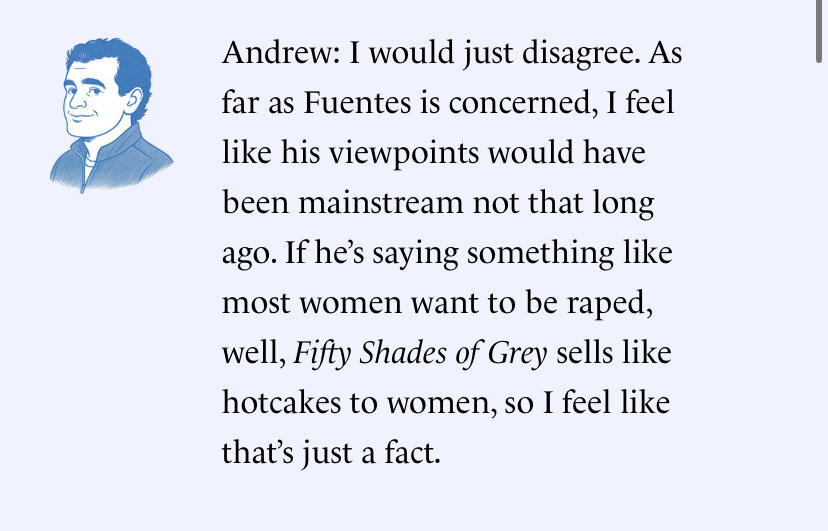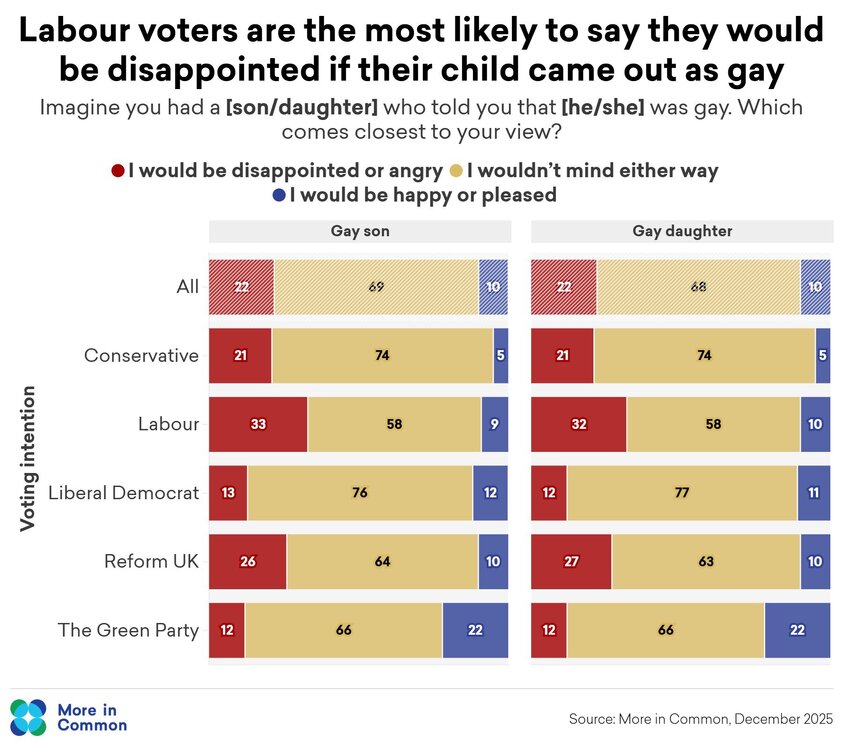-
Posts
12031 -
Joined
-
Last visited
-
Days Won
26
Content Type
Profiles
Forums
Store
Downloads
Recruiting - 2020
2019-2020 Football Season
Football
Entertainment
Sports
News and Business
Cloak Room
Transfer Portal
Recruiting
Events
Everything posted by 956 Worldwide
-
Minnesota vs New Mexico will be color vs color. I love everything about this except the giant gopher.
-
He summons the dead, because Circe explained that he had to ask the shade of a dead prophet for answers about what to do to get home. He has to sail to the edge of the known world and perform a ritual. Honestly a pretty great summary of the story:
-
The penteconters slap.
-
Not having friends is a major issue and it would be fascinating to see the make friendship rate for Slutcon attendees. A big issue is men who expect a prospective partner to fill every social, emotional, and sexual need they have. It’s notable they don’t have a philosophy to blame men for a lack of friends. These people have existed. If you recall Columbine, the shooters targeted pretty girls and the boys they liked. In this decade they’d be called incels. I do think the online world allowed them to seek out others like them, take shelter from the reality of their behavior, and even create a monetized ecosystem targeting them. We all knew a few “incels” in college and high school— no one was trying to make money off them and they didn’t have a huge community of people validating their frustrations. We need to consider the impact on women and girls, too. It is no longer one weirdo classmate leering or making inappropriate comments on her body, or developing an unreciprocated crush. It’s a stream of inappropriate, awkward, unwanted sexual advances from guys who are fed a stream of OF girls by the algos. A dating app is designed to deliver low-effort shock flirting or creepy advances that and I believe it creates a really distorted view of what most men are like. A topic for another thread is the impact of platforms that encourage teenagers to express their opinions of a classmate’s bikini photos via nuanced pictograms and what that does to everyone’s mental health.
-
Anyway, better advice than Slutcon is: try to become an acquaintance or friend of a woman you are not sexually attracted to. Go in with the intention of getting to know a woman you don’t think you’d ever want to fuck, and don’t act like you want to fuck her. Don’t even think about it. - Maybe you’ll make a friend. Awesome! She will also likely help you meet more women. Use your new social skills there. - Maybe she won’t want to get to know you. Maybe she won’t like being around you. Maybe your problem is just “people.” Time to reassess. Tweak your game. Try again champ! - Maybe this is a meet cute and over time you will fall for each other. This won’t happen but it could. But don’t try to make it happen. If you do that you’re doing it wrong! Back to step one— DO NOT TRY TO SLEEP WITH HER. - Maybe she will mistake friendly interest for romantic interest and you will need to grapple with that. Look at you- putting someone in the “friend zone.” Are you a bad or cruel person? Is it your fault that she couldn’t accept what you felt and were offering? No? Many life lessons to ponder here.
-
I mostly agree with this but for the incels and weirdos who go to Slutcon I think it still won’t work and they’ll need training wheels. Church is for sure a place where a slightly inexperienced, or dorky awkward guy can meet women with a support network of people cheering for them. Works well for our generation. I don’t think we appreciate how nuked this generation of weirdos are. They are not going to be able to: - Politely feign interest in the sermon or Bible study she wants to talk or ask about - Spend a few minutes jawboning with the dads there about a game or camping or how business is going - Slap on a pair of khakis and a button-down and get a haircut that looks like the married men there (signaling that they are in the mix for that future). - Get acquainted with a church girl, accept that this particular church girl isn’t interested, and then show up next Sunday and be polite and genuinely friendly, and demonstrate that maybe you’re OK for some other church girl even if the first didn’t work out. - Making friends with a church girl THEY are not interested in or even—gasp— with another man there so they can practice doing things like “talking to people” or “compromising on an activity” or “grabbing a burger just to hang out. These guys are FRIED man. They can’t interact with women without either explicitly trying to fuck them, getting angry that they don’t want to fuck, or treating them like non-entities because they aren’t fuckable. They don’t make friends, they just look for other dudes who validate their women hate. They don’t have normal or non-off putting interests and can’t pretend they do. A lot of these skills they can’t or don’t want to learn and they didn’t learn them in youth group or wherever. My folks are in leadership in a church and have talked to me about 1-2 burnouts— 18-20 with no job or prospects— who actually where part of the church with their families. They failed to develop and they’ve had to be talked to (and their parents) about how church is for everyone, and that means these dudes can’t creep on girls and act wounded when girls don’t reciprocate.
-
The Odyssey is just much more fun- sex, monsters, shipwrecks, swashbuckling, and a big final shootout. The Iliad is brooding, deep, and a bunch of dudes being their worse selves because they have been stuck on a shitty beach they never wanted to go to anyway. I love the Odyssey, it is a foundational story and basically all incredible journey/hero trying to go home stories are just covers. I want to know how Nolan treats Odysseus. The Greeks treat him as the most Greek of all heroes, admiring his cleverness and resourceful pragmatism. The Romans felt like he was a tricky, deceitful asshole who bucked their stodgy, do a simple job well attitude. Dante and Shakespeare agreed and the former put him in Hell for being a real dick. There isn’t a “real” Odysseus, every Western generation creates its own, and I expect Nolan will give us a brooding post-modern guy with lots of inner torment (the Greeks didn’t seem to think he should be bothered by being a selfish prick, and the Gods appeared to come around to the view that he was just smart enough you had to tip your hat). But he shouldn’t be in a fucking Viking longship.
-
Maybe it’s part of the expanded Nolan Universe and we are looking at Bruce Wayne being incepted or Teneted or Interstellared into ancient Mycenae and he’s also Agamemnon. Or Bruce Wayne was Agamemnon all along.
-
-
One of the interesting phenomena (albeit predictable) associated with rapid demographic shift in Britain is that the center-left party is now home to more voters who individually disapprove of gay people than the far-right party. Trans is not a part of this, but I’d expect similar ratios. It will be interesting to see where/whether gay rights moves or lands. US demographic shifts are a different mix. Although there are isolated pockets where this tracks, like in locales in Michigan where Democratic Muslim leaders have taken majorities and banned pride flags on public property for display.
-
I just googled “Odyssey movie ship.” Here is what that used: https://www.bbc.com/news/articles/clyn32vgrrqo.amp
-
It’s been a long time since I read that book. I have no doubt. I don’t dispute that pre-contact Polynesians likely did not do things like raise an army and place it in the field for a long campaign and sustain it with taxation and loans raised from other pre-contact tribes. There was for sure conquest and likely genocidal conquest. Post-contact, there was that time that a group of Māori hijacked British ships, forced the crew to sail to an island occupied by a non-violent tribe, and them used firearms to invade, enslave: and then genocide said non-violent tribe. https://en.wikipedia.org/wiki/Moriori_genocide
-
That is because they were on islands (a long way away from each other) and to your last point, sustained and large-scale war requires a certain level of technology and bureaucracy to include writing. As far as treating each other better, it’s a matter of perspective. Europeans generally did not eat people they defeated on the battlefield.
-

Papers, please. Surly thread of deportation cruelty dominance
956 Worldwide replied to Captainant's topic in Daily Texan
None of those involve peiple who were detained in local jails for months or even weeks, or “disappeared off the street.” They are people mistakenly or (as ruled in a decision) improperly detained for a few days, in any event less than a week. You argued that the former was happening. The latter is a problem, certainly, but it is notably less egregious than the former and there are also tweaks and safeguards that can be implemented to prevent it. It is notable that Fairfax will refuse to do even the mild, settlement approved route of placing a phone call notification when someone is being released. I am going to nope out of this convo because you have a deep aversion to simply admitting you were mistaken about a significant question (or at least that the question isn’t settled); instead identifying a different problem and claiming that’s what you mean all along. It is exhausting and an unproductive way to have a conversation. -
Knights and royals Normans, the Welsh Celts, and the English Anglo-Saxons. Roughly, by 1415 there had been a lot of jumbling. It was like 1000 years between the initial Anglo-Saxon settlement and Agincourt.
-

Papers, please. Surly thread of deportation cruelty dominance
956 Worldwide replied to Captainant's topic in Daily Texan
Twice did not post any data, he posted a link to the detainer form itself which also had a link to a settlement explainer. In neither one is there any data that local jails are holding people regularly for months on ICE detainers. I welcome that data if it exists. It has not been provided and I haven’t seen it. https://immigrantjustice.org/wp-content/uploads/2025/05/gonzalez_settlement_explainer_4-16-25.pdf The executive branch does not have to pass a law for every action it takes to further efficiency in implementing laws Congress passed. I’m unaware of any decision holding the detainer request itself to be unconstitutional or illegal. I have seen some courts side with some plaintiffs, mostly after the 48 hour hold. I think that is separate from how any single administration misuses procedures. -
Well, the knights and royals were but the archers were good English and Welshmen.
-

Papers, please. Surly thread of deportation cruelty dominance
956 Worldwide replied to Captainant's topic in Daily Texan
I think you are conflating the 48 hour detainer with actual ICE detention once removal proceedings are initiated. I do not see an epidemic of people held for months or weeks on ICE detainers in local jails. I think the burden needs to be on you to show some data that is actually happening with regularity. -
Not me. I’m more interested in whether Nolan can come up with material for a prequel.
-

Papers, please. Surly thread of deportation cruelty dominance
956 Worldwide replied to Captainant's topic in Daily Texan
Because I was satisfied that this tool used by presidents Bush and Obama did not turn the U.S. into an authoritarian hellscape, and I believe that a lot of the meltdowns over it are what led to a very strong reaction the other way. I have a long enough memory to remember these accusations lobbed against Obama. I believe you are confusing advocacy with reality when it comes to the rationale for not cooperating on this stuff. I would happily settle for “48 hours, then you get cut loose. No extensions.” I’d happily settle for just a phone call (which many counties won’t do).
Football ... Basketball ... Baseball ... Other Sports ... Futbol ... 🤫995🤫 ... Gambling ... Movies & TV ... Music ... Hobbies ... Lulz ... Food & Travel ... Daily Texan ... Business and Markets ... Cloak Room ... Help ... For Sale ... Board Discussion ... Subscribe!... Donate!... COOKIE MONSTER!











